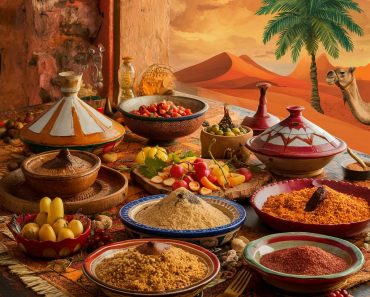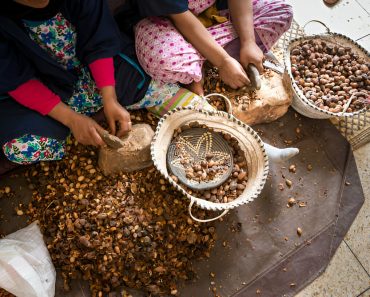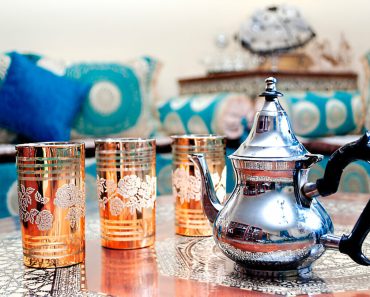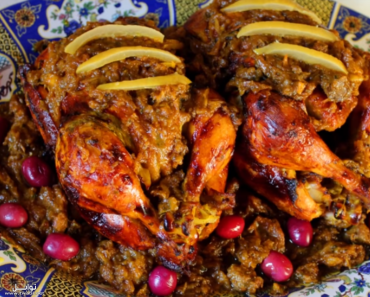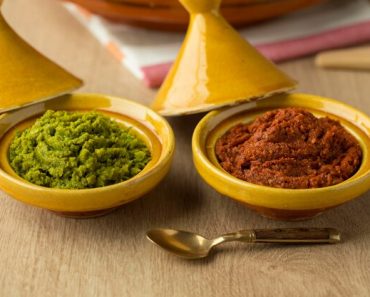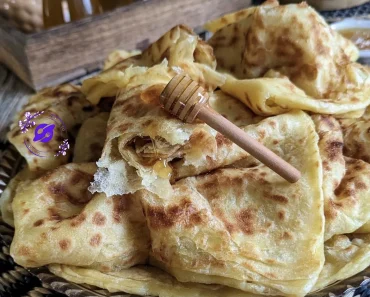Unveiling the Magnificence of Moroccan Tanjia : A Journey Through Time, Flavor, and Tradition
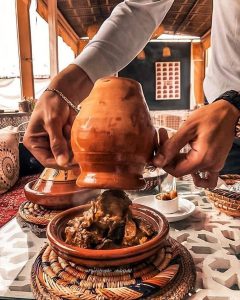
Moroccan Tanjia
The Tanjia Plate, a Moroccan specialty, showcases slow-cooked lamb with aromatic spices, creating a flavorful dish traditionally cooked in clay pots.
Moroccan cuisine is a symphony of spices, textures, and aromas that have captivated food enthusiasts worldwide. Among its culinary treasures stands Moroccan Tanjia , a dish that embodies the rich history, cultural significance, and exquisite flavors of Morocco. In this comprehensive exploration, we delve into the depths of Tanjia, uncovering its origins, characteristics, and its versatile presence in Moroccan cuisine.
A Tapestry of Tradition: The Historical Roots of Moroccan Tanjia
To truly understand Tanjia is to delve into the annals of Moroccan history, where culinary traditions intertwine with cultural narratives. The origins of Tanjia can be traced back to the vibrant streets of Marrakech, a city steeped in centuries-old traditions and bustling markets brimming with spices and fresh produce.
Historically, Tanjia has deep-rooted connections with the working-class communities of Marrakech. It is said that laborers, predominantly men, would gather in public bathhouses on weekends for communal baths and relaxation. These gatherings evolved into social rituals where stories were shared, friendships forged, and Moroccan Tanjia was born.
Legend has it that workers, seeking a hearty meal that could cook slowly while they indulged in leisure, devised Tanjia as a solution. The dish was prepared in tall, narrow clay pots known as “tanjias,” which were sealed tightly and left to simmer in the residual heat of the bathhouse’s dying embers. This slow-cooking method allowed the flavors to meld harmoniously and the meat to become tender, creating a dish that was both flavorful and convenient for communal gatherings.
Embodying Moroccan Identity: The Place of Tanjia in Culinary Culture
In modern-day Morocco, Tanjia has transcended its humble origins to become a culinary emblem, particularly in Marrakech. The dish is synonymous with hospitality, celebration, and the artistry of Moroccan cooking. It is often prepared for special occasions, family gatherings, and festive feasts, where its aromatic presence fills homes with anticipation and warmth.
The preparation of Tanjia is not merely a culinary endeavor but a ritualistic experience that reflects Moroccan values of patience, craftsmanship, and the importance of shared meals. From selecting the finest cuts of meat to meticulously blending spices and slow-cooking the dish to perfection, every step in the Tanjia-making process is imbued with care and tradition.
Unraveling the Tapestry: Characteristics of Moroccan Tanjia
What sets Moroccan Tanjia apart is its distinctive blend of flavors, cooking technique, and the cultural nuances that infuse every bite with a story. At the heart of Tanjia lies the choice of meat, with lamb being the preferred option for its tender texture and ability to absorb spices. However, variations using beef or even chicken can also be found, each offering a unique twist on the classic dish.
The key to Tanjia’s irresistible flavor profile lies in its marination. The meat is bathed in a symphony of spices that includes cumin, paprika, saffron, garlic, and preserved lemon—a quintessential ingredient in Moroccan cuisine known for its tangy zest. This aromatic blend not only tenderizes the meat but also imparts a depth of flavor that evolves during the slow-cooking process.
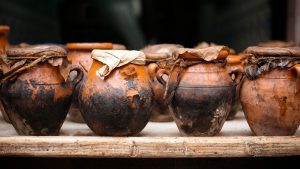
Moroccan Tanjia
Once marinated, the meat is placed in the tanjia pot along with a generous drizzle of olive oil and a splash of water. The pot is then sealed tightly with a layer of parchment paper and covered with a cone-shaped lid, creating a steamy, flavor-infused environment that transforms the ingredients into a culinary masterpiece.
The slow-cooking process is where the magic happens. Moroccan Tanjia is traditionally cooked over low heat for several hours, allowing the flavors to meld, the meat to become fork-tender, and the sauce to develop a rich, velvety consistency. The result is a dish that melts in your mouth, with each bite revealing layers of complexity and a symphony of spices that dance on your palate.
Beyond the Pot: Tanjia’s Culinary Influence
While Moroccan Tanjia shines as a star dish in Moroccan cuisine, its influence extends far beyond the confines of its clay pot. The spices and cooking techniques used in Tanjia are foundational elements in Moroccan cooking, shaping a myriad of other dishes that showcase the country’s culinary prowess.
The aromatic spices—cumin, paprika, saffron—used in Tanjia find their way into tagines, couscous dishes, and hearty stews, infusing each creation with a touch of Moroccan authenticity. The slow-braising method employed in Tanjia is also emblematic of many Moroccan meat dishes, where patience and attention to detail yield tender, flavorful results.
Moreover, Tanjia serves as a bridge between past and present, tradition and innovation. While the core recipe remains steeped in history, modern chefs and home cooks often put their own spin on Tanjia, incorporating seasonal ingredients, experimenting with different cuts of meat, or adding subtle twists to the spice blend.
Preserving a Culinary Legacy: Tanjia in Contemporary Context
In today’s culinary landscape, where global flavors intertwine and fusion cuisine reigns supreme, Moroccan Tanjia stands as a testament to the enduring allure of authentic, time-honored recipes. It represents more than just a meal; it encapsulates a way of life, a cultural narrative, and a deep-rooted connection to the land and its people.
As Morocco continues to embrace its culinary heritage while embracing innovation, Tanjia remains a cherished symbol of tradition and innovation coexisting harmoniously on the plate. Whether enjoyed in the bustling markets of Marrakech, savored in a cozy home kitchen, or recreated in restaurants around the world, Tanjia invites diners on a sensory journey through Morocco’s rich culinary tapestry.
In conclusion, Moroccan Tanjia is not just a dish; it’s a story—a story of history, culture, and the enduring power of food to bring people together. It’s a celebration of flavors, traditions, and the timeless art of slow cooking. As you savor each bite of Moroccan Tanjia, you’re not just tasting a meal; you’re experiencing centuries of culinary craftsmanship, passed down through generations, and lovingly preserved for the delight of all who gather around the table.
